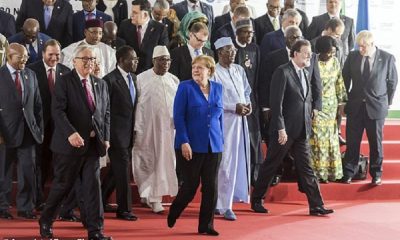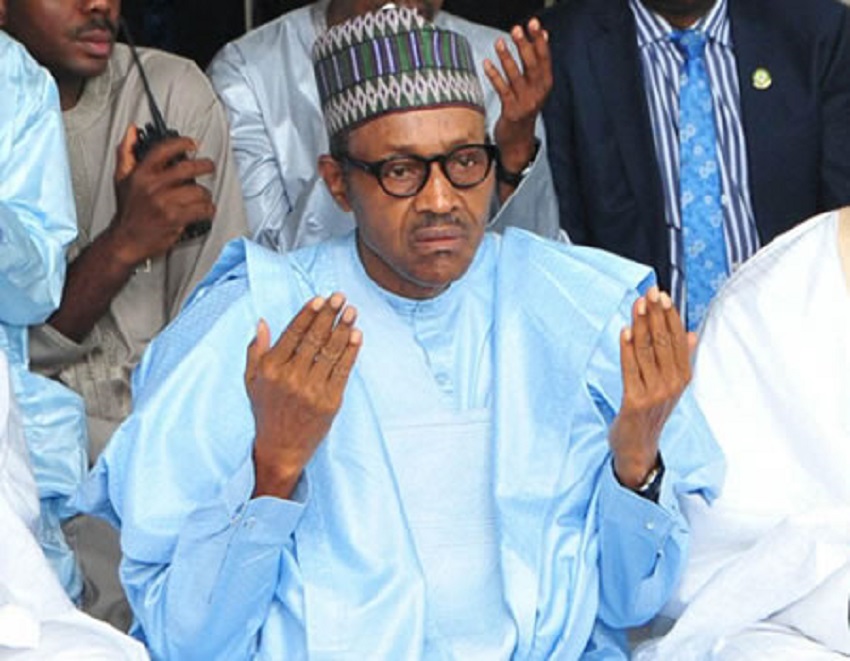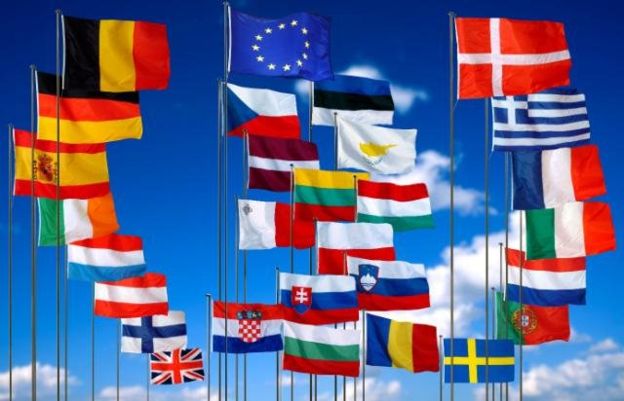World
Mozambique’s Gas Among Alternatives for European Union
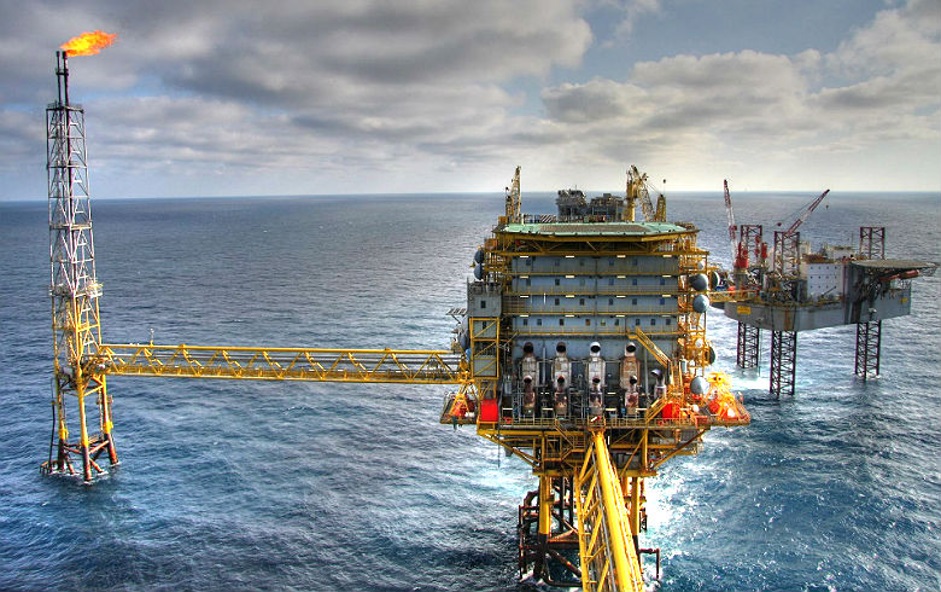
By Kestér Kenn Klomegâh
Mozambique is increasingly stepping up efforts in the production of liquefied natural gas and consequently becoming one of the suitable reliable suppliers to Europe. While it might not replace Russia which cuts its export of gas as a reciprocal action against European Union members, Mozambique seeks ultimately to earn some revenue from its natural resources.
Mozambique’s state-owned National Hydrocarbons Company (ENH) has acknowledged the chances of helping to address growing gas needs in Europe, due to uncertainty over Russian supplies following the invasion of the former Soviet republic of Ukraine.
“With the situation of the war in Ukraine, the European market has increased demand for gas. One of the ways to speed up our gas to reach the markets is to use a second floating platform similar to the one that is already here in Mozambique,” said ENH’s Executive Commercial Director, Pascoal Mocumbi Júnior, quoted by Mozambique’s Information Agency (AIM).
Mocumbi Júnior explained that a second floating liquefied natural gas production platform would join an identical infrastructure that already exists in Mozambican waters if the country were to be part of the solution to the energy deficit caused by the Russia-Ukraine crisis.
The construction time for a possible second floating unit would be three years, two years less than the time it took to build the unit that has already started loading hydrocarbons, as a way to gain time and speed up gas production.
“With the amount of gas existing in Mozambique, automatically positions itself as an alternative to supply the need that currently exists and the faster the country can get its gas on the market, the greater the possibility of taking advantage of the current crisis caused by the Russia-Ukraine conflict,” he stressed.
In late July, the outgoing European Union (EU) Ambassador to Mozambique argued that natural gas from Cabo Delgado was among the alternatives in Europe’s plan to diversify energy sources in the face of constraints caused by Russia’s invasion of Ukraine.
“Mozambique’s gas, with the presence of large European multinational companies, now has an even more important and strategic value,” Sánchez-Benedito Gaspar said in an interview with Lusa, Mozambican News Agency, in Maputo.
According to the diplomat, with Russia’s invasion of Ukraine, Europe came to the conclusion that “it cannot trust its old partner [Russia, among the world’s biggest gas exporters], which is authoritarian and uses gas as an instrument of war,” and is making efforts to secure alternative sources.
“We have adopted a new strategy in Europe, called RePower EU, which has several elements […] With regard to gas, which is considered a transitional energy, we are looking for alternative suppliers […] Mozambique is among the alternatives,” Sánchez-Benedito Gaspar stressed. The Spanish diplomat (EU Representative) ended his mission in Mozambique in July and was replaced by the Italian Ambassador Antonino Maggiore.
According to Noticias, an information portal, the government is creating the necessary conditions for a resumption of the TotalEnergies-led Mozambique LNG project, a verification team is already working in Cabo Delgado.
Minister of Mineral Resources and Energy, Carlos Zacarias, explained that the government wanted to see operations resume as soon as possible. “The security situation in the area where the TotalEnergies and ExxonMobil projects will be implemented has, in our view, improved a lot. Naturally, before resuming activities, there will be a lot of scrutiny on the part of the companies carrying out the investments,” Minister Zacarias said.
Carlos Zacarias said although the government considered the conditions for the resumption of the project were improving, it was up to the company to verify if, from its point of view, the environment to recommence activities was in place. The restoration of security in the district of Palma has permitted the return of some of the residents and the resumption of some economic activities.
According to Minister Zacarias, in the same way, that the population was gradually returning following the improvement of security conditions, economic enterprises could also do so. That it was not just the TotaEnergies project that had been suspended, but also many others such as the roads under construction in various locations.
In April last year, the multinational Total announced the withdrawal of all personnel from its LNG project in Afungi. The Mozambique LNG offshore project, valued at around $20 billion, aims to extract about 13.12 million tonnes of recoverable gas over 25 years and generate profits of US$60.8 billion, half of which will go to the Mozambican state.
Total E&P Mozambique Area 1 Limited, a wholly-owned subsidiary of Total SE, operates the Mozambique LNG project, with a 26.5% equity interest, together with ENH Rovuma Area 1, S.A. (15%), Mitsui E&P Mozambique Area 1 Limited (20%), ONGC Videsh Rovuma Limited (10%), Beas Rovuma Energy Mozambique Limited (10%), BPRL Ventures Mozambique B.V. (10%), and PTTEP Mozambique Area 1 Limited (8.5%).
In order to achieve the task of exporting to Europe, Mozambique’s National Petroleum Institute (INP) intends to maximize the use of Mozambican labour in gas extraction projects in Mozambique, generating 14,000 possible jobs in the four major projects underway.
Director of Local Content at the INP, Natália Camba, clearly pointed to the latest projects including Mozambique LNG and Rovuma LNG, which are both onshore gas liquefaction projects in the northern province of Cabo Delgado, the Coral Sul floating LNG platform, anchored some 40 kilometres off the Cabo Delgado coast, and the Inhassoro-Temane project in the southern province of Inhambane.
The Mozambique LNG project involves gas liquefaction plants on the Afungi Peninsula, in the Palma district. But it is currently interrupted and there is no firm date for the resumption of activities, due to the attacks by Islamist terrorists. But once the security issues are solved, the project should create 5,000 jobs for Mozambicans in the construction phase and 1,200 in the operational phase, with a plan to train 2,500 technicians.
In the case of the projects already underway, namely Coral Sul FLNG and Inhassoro-Temane, they have jointly made available 3,820 jobs in the construction phase alone, with a forecast of around 486 fixed jobs in the production phase, including foreign labour that will be reduced in the subsequent phases.
“These projects also have a great capacity to create indirect jobs, with foreign labour decreasing throughout the project and Mozambican labour increasing. Most of these jobs are expected to be provided by contractors and subcontractors,” she said, and it is expected that 88 per cent of those recruited would work in construction.
With its strategy to meet the demand for skilled labour for the extractive industry projects in the country, according to the director, the INP intends to develop a framework of skilled human resources to meet the demands of the market, as well as to combat the discrepancy between the investments made in the industry and its capacity to generate employment.
In the framework of Local Content, the INP’s actions with the companies operating the gas projects envisage the qualification, training and certification of about 200 Small and Medium Enterprises operating to internationally required standards.
The armed insurgency that began in 2017 in Cabo Delgado province, and the entry of foreign troops to support Mozambican forces in the middle of last year have improved the security situation, recovering important positions such as the village of Mocímboa da Praia. Since July 2021, an offensive by government troops was fixed, with the support of Rwandans and later by the Standby Joint Force consisting of forces from members of the Southern African Development Community (SADC).
Cabo Delgado province, located in northern Mozambique, is rich in natural gas. Although the gas from the three projects approved so far has a destination, Mozambique has proven reserves of over 180 trillion cubic feet, according to data from the Ministry of Mineral Resources and Energy. With an approximate population of 30 million, Mozambique is endowed with natural resources. It is a member of the Southern Africa Development Community (SADC) and the African Union.
World
Comviva Wins at IBSi Global FinTech Innovation Award
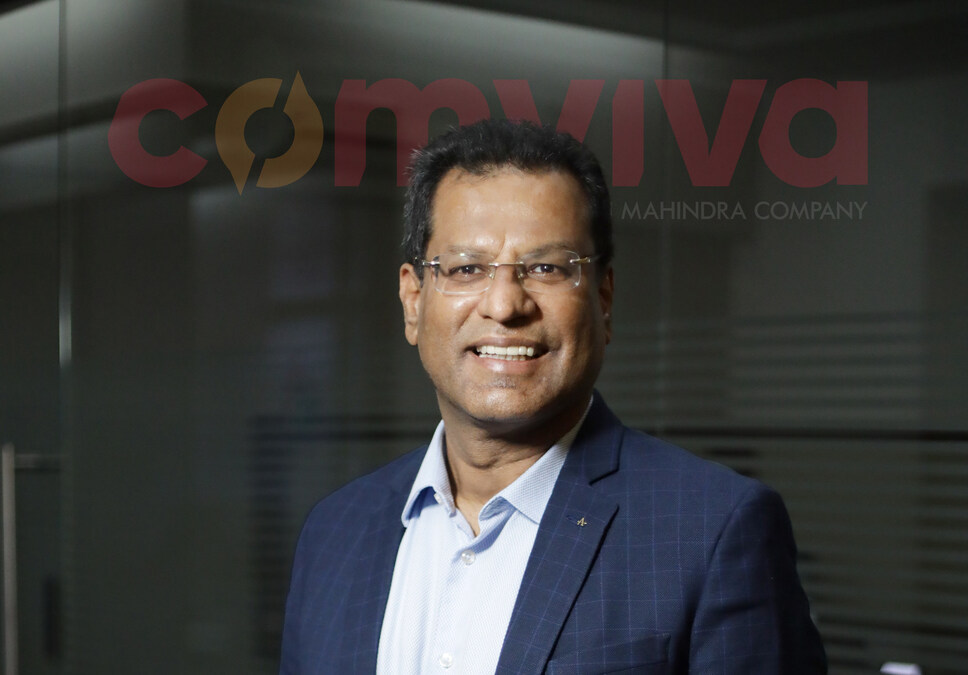
By Modupe Gbadeyanka
For transforming cross-border payments through its deployment with Global Money Exchange, Comviva has been named Best In-Class Cross Border Payments.
The global leader in digital transformation solutions clinched this latest accolade at the IBS Intelligence Global FinTech Innovation Award 2025.
The recognition highlights how Comviva’s mobiquity Pay is helping shape a modern cross-border payment ecosystem that stretches far beyond conventional remittance services.
Deployed as a white label Wallet Platform and launched as Global Pay Oman App, it fulfils GMEC’s dual vision—positioning itself as an innovative payment service provider while digitally extending its core money transfer business.
The solution allows GMEC to offer international money transfers alongside seamless forex ordering and other services. These capabilities sit alongside a broad suite of everyday financial services, including bill and utility payments, merchant transactions, education-related payments, and other digital conveniences — all delivered through one unified experience.
“This award is a testament to Oman’s accelerating digital transformation and our commitment to reshaping how cross-border payments serve people and businesses across the Sultanate.
“By partnering with Comviva and bringing the Global Pay Oman Super App, we have moved beyond traditional remittance services to create a truly inclusive and future-ready financial ecosystem.
“This innovation is not only enhancing convenience and transparency for our customers but is also supporting Oman’s broader vision of building a digitally empowered economy,” the Managing Director at Global Money Exchange, Subromoniyan K.S, said.
Also commenting, the chief executive of Comviva, Mr Rajesh Chandiramani, said, “Cross-border payments are becoming a daily necessity, not a niche service, particularly for migrant and trade-linked economies.
“This recognition from IBS Intelligence validates our focus on building payment platforms that combine global reach with local relevance, operational resilience and a strong user experience. The deployment with Global Money Exchange Co. demonstrates how mobiquity® Pay enables financial institutions to move beyond remittances and deliver integrated digital services at scale.”
“The deployment of mobiquity Pay for GMEC showcases how scalable, API-driven digital wallet platforms can transform cross-border payments into seamless, value-rich experiences.
“By integrating remittances, bill payments, forex services, and AI-powered engagement into a unified Super App, Comviva has reimagined customer journeys and operational agility.
“This Best-in-Class Cross-border Payments award win stands as a testament to Comviva’s excellence in enabling financial institutions to compete and grow in a digitally convergent world,” the Director for Research and Digital Properties at IBS Intelligence, Nikhil Gokhale, said.
World
Russia Renews Africa’s Strategic Action Plan
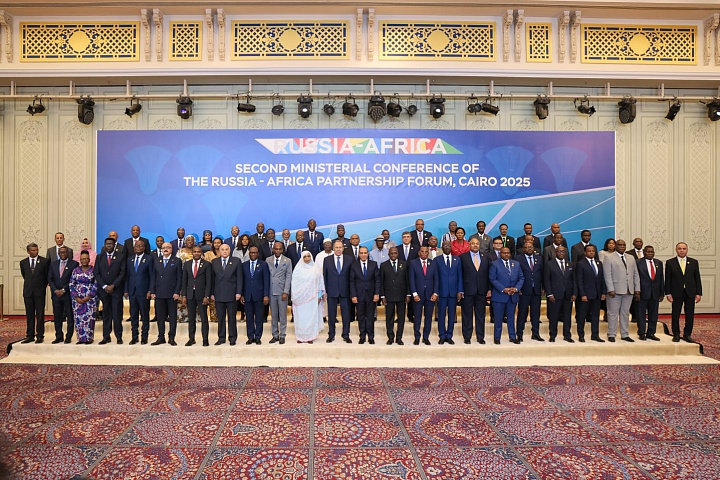
By Kestér Kenn Klomegâh
At the end of an extensive consultation with African foreign ministers, Russian Foreign Minister, Sergey Lavrov, has emphasized that Moscow would advance its economic engagement across Africa, admittedly outlining obstacles delaying the prompt implementation of several initiatives set forth in Strategic Action Plan (2023-2026) approved in St. Petersburg during the Russia-Africa Summit.
The second Ministerial Conference, by the Russian Foreign Ministry with support from Roscongress Foundation and the Arab Republic of Egypt, marked an important milestone towards raising bilateral investment and economic cooperation.
In Cairo, the capital city of the Arab Republic of Egypt, Lavrov read out the final resolution script, in a full-packed conference hall, and voiced strong confidence that Moscow would achieve its strategic economic goals with Africa, with support from the African Union (AU) and other Regional Economic blocs in the subsequent years. Despite the complexities posed by the Russia-Ukraine crisis, combined with geopolitical conditions inside the African continent, Moscow however reiterated its position to take serious steps in finding pragmatic prospects for mutual cooperation and improve multifaceted relations with Africa, distinctively in the different sectors: in trade, economic and investment spheres, education and culture, humanitarian and other promising areas.
The main event was the plenary session co-chaired by Russian Foreign Minister Sergey Lavrov and Egyptian Minister of Foreign Affairs, Emigration, and Egyptians Abroad Bashar Abdelathi. Welcome messages from Russian President Vladimir Putin and Egyptian President Abdelhak Sisi were read.
And broadly, the meeting participants compared notes on the most pressing issues on the international and Russian-African agendas, with a focus on the full implementation of the Russia-Africa Partnership Forum Action Plan for 2023-2026, approved at the second Russia-Africa Summit in St. Petersburg in 2023.
In addition, on the sidelines of the conference, Lavrov held talks with his African counterparts, and a number of bilateral documents were signed. A thematic event was held with the participation of Russian and African relevant agencies and organizations, aimed at unlocking the potential of trilateral Russia-Egypt-Africa cooperation in trade, economic, and educational spheres.
With changing times, Africa is rapidly becoming one of the key centers of a multipolar world order. It is experiencing a second awakening. Following their long-ago political independence, African countries are increasingly insisting on respect for their sovereignty and their right to independently manage their resources and destiny. Based on these conditions, it was concluded that Moscow begins an effective and comprehensive work on preparing a new three-year Cooperation and Joint Action Plan between Russia and Africa.
Moreover, these important areas of joint practical work are already detailed in the Joint Statement, which was unanimously approved and will serve as an important guideline for future work. According to reports, the Joint Statement reflects the progress of discussions on international and regional issues, as well as matters of global significance.
Following the conference, the Joint Statement adopted reflects shared approaches to addressing challenges and a mutual commitment to strengthening multifaceted cooperation with a view to ensuring high-quality preparation for the third Russia-Africa Summit in 2026.
On December 19-20, the Second Ministerial Conference of the Russia-Africa Partnership Forum was held in Cairo, Egypt. It was held for the first time on the African continent, attended by heads and representatives of the foreign policy ministries of 52 African states and the executive bodies of eight regional integration associations.
World
TikTok Signs Deal to Avoid US Ban

By Adedapo Adesanya
Social media platform, TikTok’s Chinese owner ByteDance has signed binding agreements with United States and global investors to operate its business in America.
Half of the joint venture will be owned by a group of investors, including Oracle, Silver Lake and the Emirati investment firm MGX, according to a memo sent by chief executive, Mr Shou Zi Chew.
The deal, which is set to close on January 22, 2026 would end years of efforts by the US government to force ByteDance to sell its US operations over national security concerns.
It is in line with a deal unveiled in September, when US President Donald Trump delayed the enforcement of a law that would ban the app unless it was sold.
In the memo, TikTok said the deal will enable “over 170 million Americans to continue discovering a world of endless possibilities as part of a vital global community”.
Under the agreement, ByteDance will retain 19.9 per cent of the business, while Oracle, Silver Lake and Abu Dhabi-based MGX will hold 15 per cent each.
Another 30.1 per cent will be held by affiliates of existing ByteDance investors, according to the memo.
The White House previously said that Oracle, which was co-founded by President Trump’s supporter Larry Ellison, will license TikTok’s recommendation algorithm as part of the deal.
The deal comes after a series of delays.
Business Post reported in April 2024 that the administration of President Joe Biden passed a law to ban the app over national security concerns, unless it was sold.
The law was set to go into effect on January 20, 2025 but was pushed back multiple times by President Trump, while his administration worked out a deal to transfer ownership.
President Trump said in September that he had spoken on the phone to China’s President Xi Jinping, who he said had given the deal the go ahead.
The platform’s future remained unclear after the leaders met face to face in October.
The app’s fate was clouded by ongoing tensions between the two nations on trade and other matters.
-

 Feature/OPED6 years ago
Feature/OPED6 years agoDavos was Different this year
-
Travel/Tourism9 years ago
Lagos Seals Western Lodge Hotel In Ikorodu
-

 Showbiz3 years ago
Showbiz3 years agoEstranged Lover Releases Videos of Empress Njamah Bathing
-

 Banking8 years ago
Banking8 years agoSort Codes of GTBank Branches in Nigeria
-

 Economy3 years ago
Economy3 years agoSubsidy Removal: CNG at N130 Per Litre Cheaper Than Petrol—IPMAN
-

 Banking3 years ago
Banking3 years agoFirst Bank Announces Planned Downtime
-

 Banking3 years ago
Banking3 years agoSort Codes of UBA Branches in Nigeria
-

 Sports3 years ago
Sports3 years agoHighest Paid Nigerian Footballer – How Much Do Nigerian Footballers Earn





